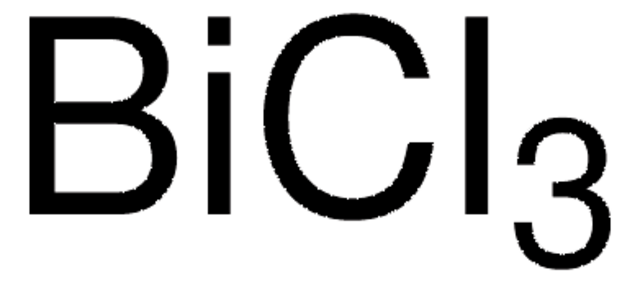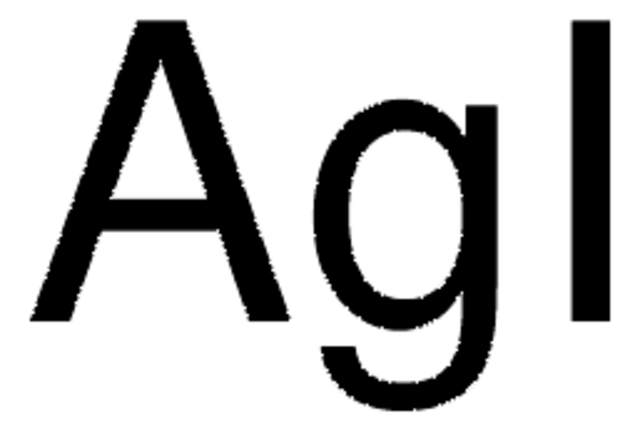All Photos(3)
About This Item
Empirical Formula (Hill Notation):
AgCl
CAS Number:
Molecular Weight:
143.32
EC Number:
MDL number:
UNSPSC Code:
12352302
PubChem Substance ID:
NACRES:
NA.21
grade:
reagent
form:
powder or chunks
Recommended Products
grade
reagent
vapor pressure
1 mmHg ( 912 °C)
product line
ReagentPlus®
Assay
99%
form
powder or chunks
reaction suitability
reagent type: catalyst
core: silver
mp
455 °C (lit.)
SMILES string
Cl[Ag]
InChI
1S/Ag.ClH/h;1H/q+1;/p-1
InChI key
HKZLPVFGJNLROG-UHFFFAOYSA-M
Looking for similar products? Visit Product Comparison Guide
General description
Silver chloride (AgCl) is widely employed as a catalyst, photographic material, and ionic semiconductor material. High photosensitivity of AgCl makes it an important photocatalyst.
Application
Silver chloride can be used as a catalyst:
Silver chloride is also be used:
- In the preparation of 1,2,3-triazoles from alkynes and azides.
Silver chloride is also be used:
- As a precursor salt to synthesize silver nanoparticles.
Legal Information
ReagentPlus is a registered trademark of Merck KGaA, Darmstadt, Germany
Signal Word
Warning
Hazard Statements
Precautionary Statements
Hazard Classifications
Aquatic Acute 1 - Aquatic Chronic 1 - Met. Corr. 1
Storage Class Code
8B - Non-combustible corrosive hazardous materials
WGK
WGK 3
Flash Point(F)
Not applicable
Flash Point(C)
Not applicable
Choose from one of the most recent versions:
Already Own This Product?
Find documentation for the products that you have recently purchased in the Document Library.
Customers Also Viewed
Band structure of silver chloride and silver bromide.
Scop PM.
Physical Review, 139(3A), A934-A934 (1965)
A type of silver chloride electrode suitable for use in dilute solutions.
Brown AS.
Journal of the American Chemical Society, 56(3), 646-647 (1934)
Ionic conductivity of silver chloride single crystals.
Corish J and Jacobs PWM.
Journal of Physics and Chemistry of Solids, 33(7), 1799-1818 (1972)
Ghodratollah Absalan et al.
Amino acids, 43(5), 1955-1967 (2012-04-12)
In this paper, adsorption behaviors of typical neutral (alanine), acidic (glutamic acid) and basic (lysine) amino acids onto the surfaces of neutral as well as positively and negatively charged silver chloride nanoparticles were examined. Silver chloride nanoparticles with different charges
H Wayne Harris et al.
Biochemical Society transactions, 40(6), 1167-1177 (2012-11-28)
Shewanella oneidensis MR-1 cells utilize a behaviour response called electrokinesis to increase their speed in the vicinity of IEAs (insoluble electron acceptors), including manganese oxides, iron oxides and poised electrodes [Harris, El-Naggar, Bretschger, Ward, Romine, Obraztsova and Nealson (2010) Proc.
Our team of scientists has experience in all areas of research including Life Science, Material Science, Chemical Synthesis, Chromatography, Analytical and many others.
Contact Technical Service










